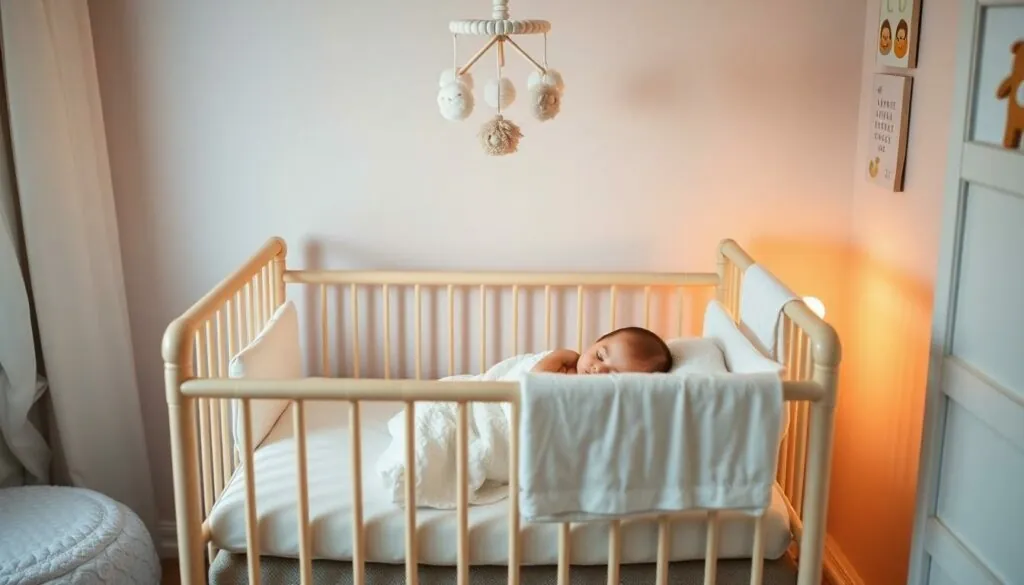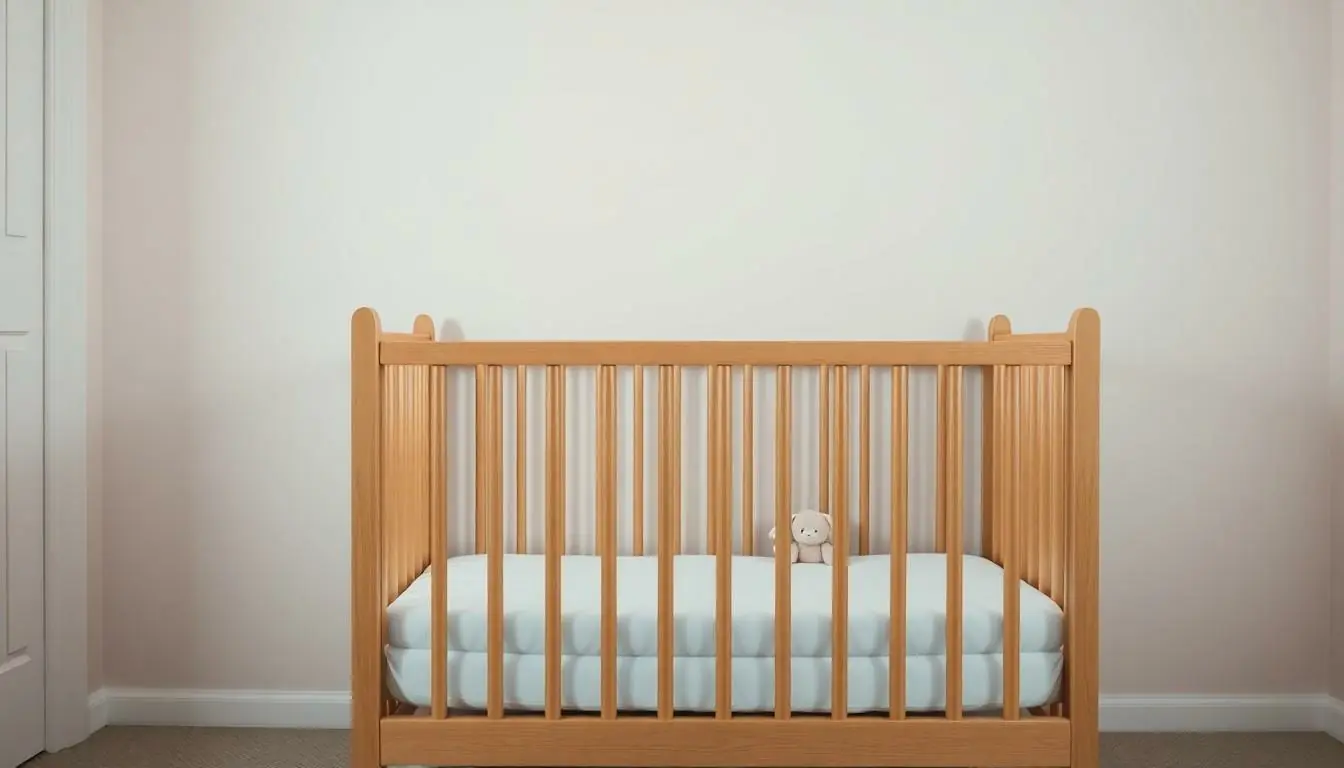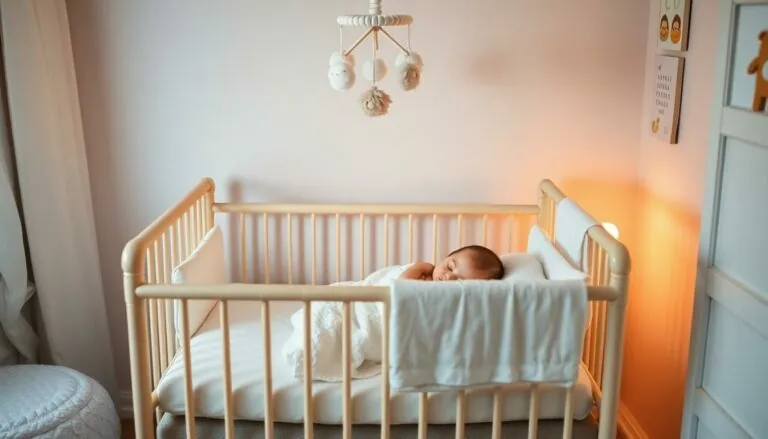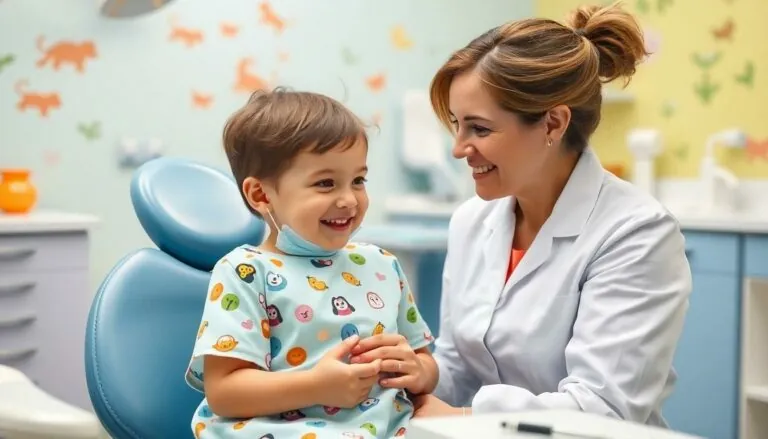Table of Contents
ToggleEvery parent knows that sleep is a precious commodity, especially when it comes to little ones. But how long do kids actually sleep in cribs? It’s a question that’s puzzled parents since the dawn of bedtime. From the blissful snores of a newborn to the occasional acrobatics of a toddler, understanding crib sleep patterns can feel like deciphering an ancient scroll.
Understanding Infant Sleep Patterns
Understanding sleep patterns plays a crucial role in determining how long kids sleep in cribs. Sleep needs differ significantly from newborns to toddlers, impacting their overall development.
Sleep Duration by Age
Infants typically sleep 14 to 17 hours daily. Newborns, in the first few weeks, tend to require even more, often up to 18 hours a day. As children progress to the 4 to 6 month range, their sleep averages around 12 to 16 hours. At the toddler stage, which spans from 1 to 3 years, sleep needs decrease slightly to 11 to 14 hours. The transition from crib to bed usually occurs between 2 and 3 years of age, marking a shift in sleep dynamics.
Factors Influencing Sleep Duration
Numerous factors significantly influence a child’s sleep duration. Environmental conditions, including noise levels, room temperature, and light exposure, impact how well children rest. Consistent bedtime routines also help regulate sleep schedules. Additionally, individual differences, such as temperament and activity level, play a vital role. Health issues, like colds or allergies, can disrupt sleep patterns. Parental behavior, including response to awakenings, further affects how long kids stay asleep in cribs.
Safety Considerations in Cribs
Safety is paramount when it comes to cribs. Parents need to ensure the crib meets current safety standards.
Choosing the Right Crib
Selecting a crib involves considering safety features, size, and design. Choose cribs that comply with the Consumer Product Safety Commission regulations. Look for sturdy construction and a secure mattress fit to prevent gaps. The crib’s slats should be no more than 2 3/8 inches apart to avoid entrapment. Consider a convertible crib that adapts as the child grows. This option encourages extended use while ensuring safety remains a priority.
Safe Sleep Practices
Implementing safe sleep practices supports a healthy sleep environment. Place the baby on their back to sleep, which significantly reduces the risk of Sudden Infant Death Syndrome (SIDS). Keep the crib free from soft bedding, pillows, and toys to prevent suffocation hazards. Set the crib in a quiet area with a comfortable room temperature for better sleep quality. Regularly check the crib for wear and tear to maintain safety. Follow recommended sleep guidelines to help the child develop healthy sleep habits.
Transitioning from Crib to Bed
Transitioning from crib to bed can be a significant milestone for both children and parents. Recognizing the right moment makes this change smoother and more successful.
Signs It’s Time to Transition
Parents often notice several indicators suggesting readiness for a bed transition. Children show signs of climbing out of their cribs, which can lead to safety concerns. Increased mobility often correlates with a desire for independence. If kids frequently express interest in sleeping in a big bed or if nighttime awakenings increase, it might signal that change is necessary. Behavioral shifts, such as resisting bedtime or showing discomfort in the crib, suggest that children may be ready for this new phase.
Tips for a Smooth Transition
Ensuring a smooth transition involves preparation and consistency. Start by introducing the new bed during daytime routines, allowing kids to explore it. Establishing a bedtime routine that emphasizes comfort can ease anxiety. Involve children in the process, letting them choose bedding or decorations. Maintain consistency with bedtime and wake-up times, which helps children adapt sooner. Consider using safety measures like bed rails to prevent falls. Patience is essential, as it may take time for children to adjust to their new sleeping environment.
Addressing Common Sleep Issues
Children often experience various sleep challenges, impacting their time spent in cribs. Understanding these issues helps parents provide better support.
Sleep Regressions
Sleep regressions frequently occur around developmental milestones. Around 4 months and again at 8 to 10 months, infants may suddenly wake more frequently. Growth spurts or teething also contribute to these disruptions. Parents might notice changes in sleep patterns during these periods, often requiring additional comfort and reassurance. Staying consistent with bedtime routines can ease transition back to restful sleep. Offering a familiar sleep environment provides comfort when regressions happen.
Nighttime Awakenings
Nighttime awakenings are common in children. Infants might wake due to hunger or discomfort, while toddlers may stir from nightmares or becoming too cold. Parents should assess the crib’s conditions, ensuring it remains safe and comfortable. Responding calmly to awakenings is key; reassurance helps children settle back to sleep quicker. Establishing consistent sleep schedules supports better nighttime rest. Encouraging self-soothing techniques allows children to learn how to fall back asleep independently.
Conclusion
Understanding how long kids sleep in cribs is essential for fostering healthy sleep habits. Parents should recognize that sleep needs change as children grow and that various factors can influence sleep duration. Prioritizing safety in the crib and establishing consistent bedtime routines can significantly enhance sleep quality. By being attentive to their child’s cues and ensuring a comfortable sleep environment, parents can support their little ones in developing restful sleep patterns. Transitioning from crib to bed should be approached thoughtfully, keeping the child’s comfort and readiness in mind. Ultimately, nurturing a positive sleep experience lays the foundation for a child’s overall well-being and development.








